Welcome back to Part II of our starts series! Last week, we discussed how using your arms while performing a track start generates the MOST propulsion of any starting technique out there. This week, we are going to dive deeper into what proper block setup looks like for a track start. We will be breaking down the “take your mark” position into 3 components: leg setup, arm setup, and neutral spine alignment. The goal of this article is to get a swimmer into the BEST possible “take your mark” position, so they can use their arms effectively and generate TONS of propulsion within their track start!
If you missed last week’s blog post, [CLICK HERE] to catch up.
Otherwise, let’s get started!
Leg Setup:
As we discussed last week, a track start is the block setup where a swimmer is standing in a split stance. Within the track start, a swimmer’s dominant foot should be placed at the front of the block with their toes curled over, while their back foot will be placed with the ball of their foot on the foot plate and their heel flexed above. Their feet should be about hip-width distance apart.
The ideal positioning for the back foot plate is for a swimmer to create a 90-degree knee bend in their back leg prior to the start. If the back foot plate is too close or too far away (i.e. more or less than 90-degrees), the swimmer will not be in proper positioning to effectively load their muscles and generate the MOST propulsion possible.
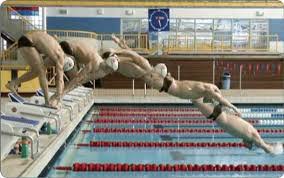
PHOTO FROM THE “SCIENCE OF SWIMMING FASTER” BY SCOTT RIEWALD AND SCOTT RODEO
Arm Setup:
After a swimmer has found their proper leg setup, we need to discuss their arms. When a swimmer steps up to the block to setup, it’s always ideal for them to bend at the waist—as opposed to standing up. If a swimmer steps onto the block and only setups only their legs—by standing straight up and looking forward, they minimize the amount of time they have between the “take your mark” and “beep” to get their arms in proper positioning. This mistake is common in age-groupers and younger swimmers—see below.
Remember: The arms play a KEY role in the start, so allowing yourself the time to setup both your arms and legs on the block is critical.
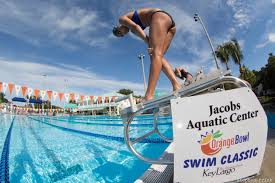
So after a swimmer has stepped up to the block, they should take the time to get their legs into the proper split-legged stance and then, bend at the waist gripping the block with all TEN fingers curled over the front edge. From there, a swimmer rotates their elbows so they are pointing backwards (towards their feet) and not out to the side.
Remember: Newton’s 3rd law of motion—for every action, there is an equal and opposite reaction.
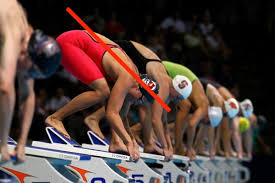
CORRECT: ELBOWS FACING BACKWARDS TOWARDS FEET.
If the elbows are facing to the sides, it creates force pushing back towards the body. This force does not help the swimmer get off the blocks. Ideally, we want a swimmer’s elbows facing their feet, so they create a force that will help the swimmer move forward—off the blocks.
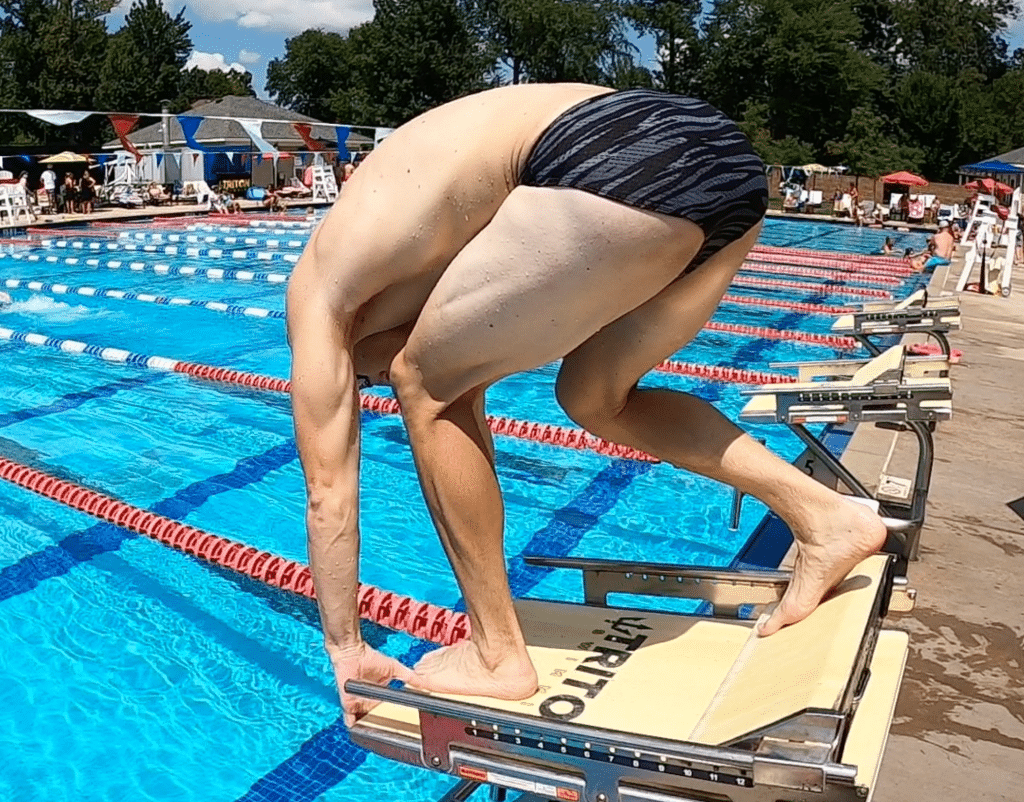
IN-CORRECT: ELBOWS FACING TOWARDS SIDES OF BODY.
Depending a swimmer’s hamstring flexibility, you may see an array of distances between the chest of the swimmer and the top of the block. It’s never a good idea to advise a swimmer to “pull” their chest down towards the block, as this will promote the body to jump “up” after they hear the beep.
Neutral Spine:
Also, the alignment of a swimmer’s spine should be neutral during the “take your mark” position. That means a swimmer’s lowest vertebrae should be in a straight line up to the base of their neck. That means the eyes look comfortably down, and a little forward while a swimmer is taking their mark.
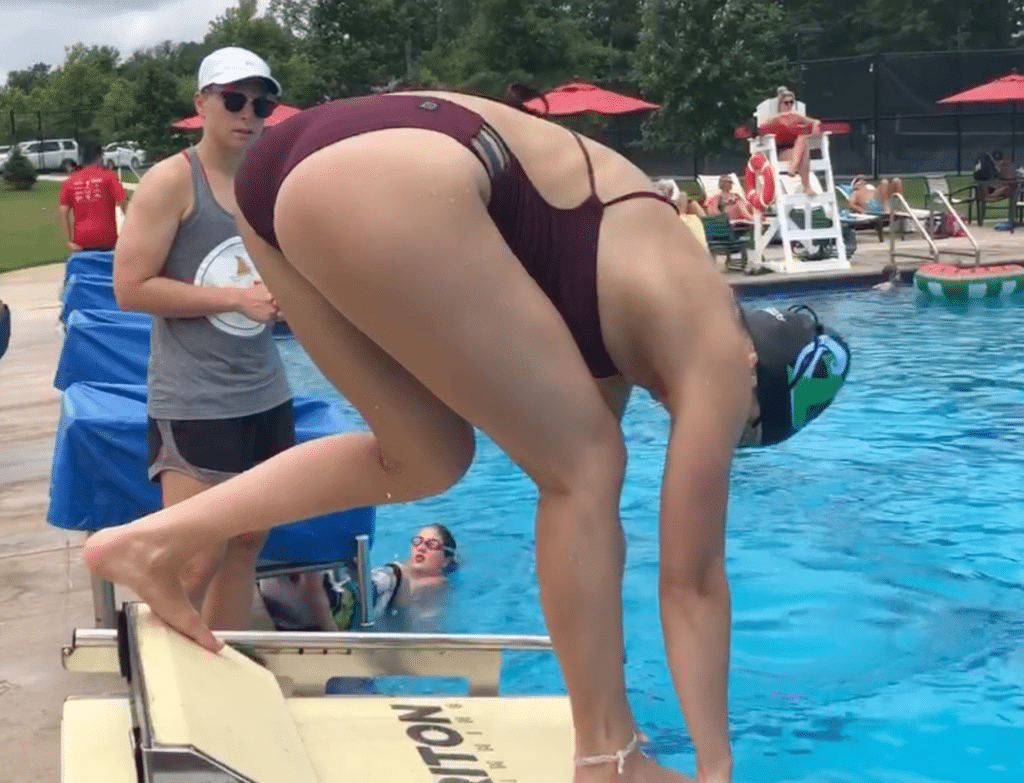
CORRECT: HEAD AND SPINE ARE IN A NEUTRAL POSITION. NOTICE IN THIS “TAKE YOUR MARK” POSITION HOW LOW HER BODY IS TOWARDS THE BLOCK TOO.
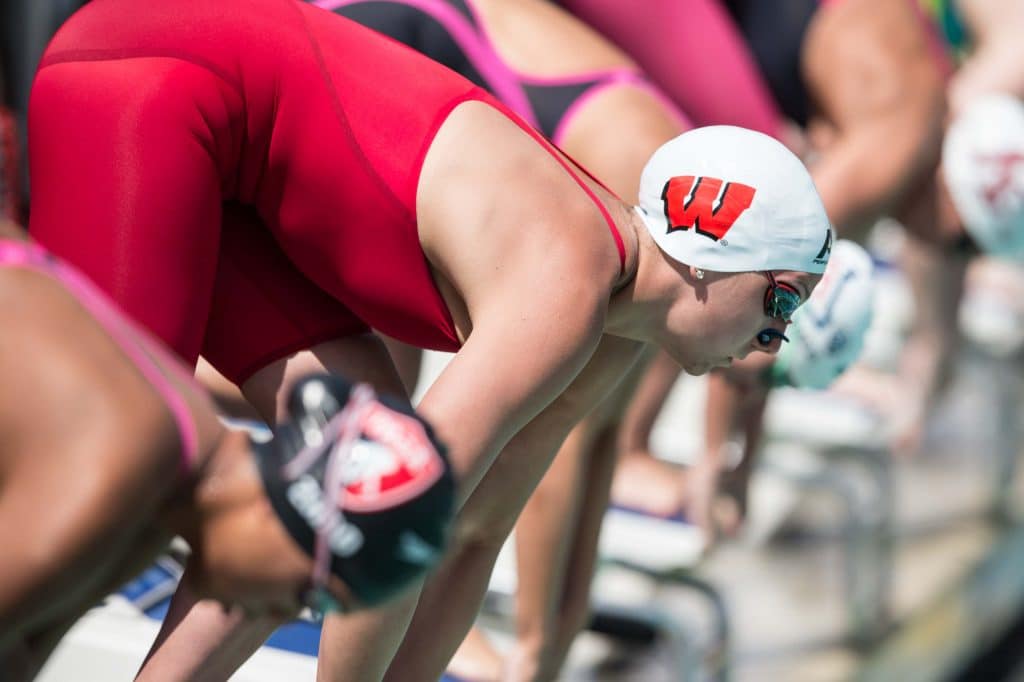
IN-CORRECT: HEAD IS OUT OF ALIGNMENT. TOO MUCH OF HIS HEAD ABOVE THE RED LINE, AS HE IS LOOKING TOO FAR FORWARD.
As much as a swimmer can, they should feel comfortable and “active” in their “take your mark” position. This position setups a swimmer to EXPLODE off the block—reacting quickly and effectively.
If a swimmer is loosely gripping the block with their hands and/or doesn’t have a 90-degree bend in their back knee, they will have a slower reaction time and slower horizontal velocity off the blocks.
[CLICK HERE] for Part III, as we will discuss a “butterfly” start versus a “sling-shot” start and how a swimmer should shift their weight between their front or back leg before the “beep.”
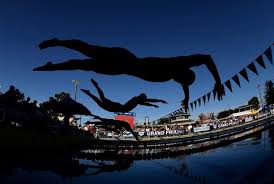
Until Next Time,
Abbie Fish

5 Responses
Very Excellent
I love these articles, they are so helpful and informative!!
Thanks Ruth!